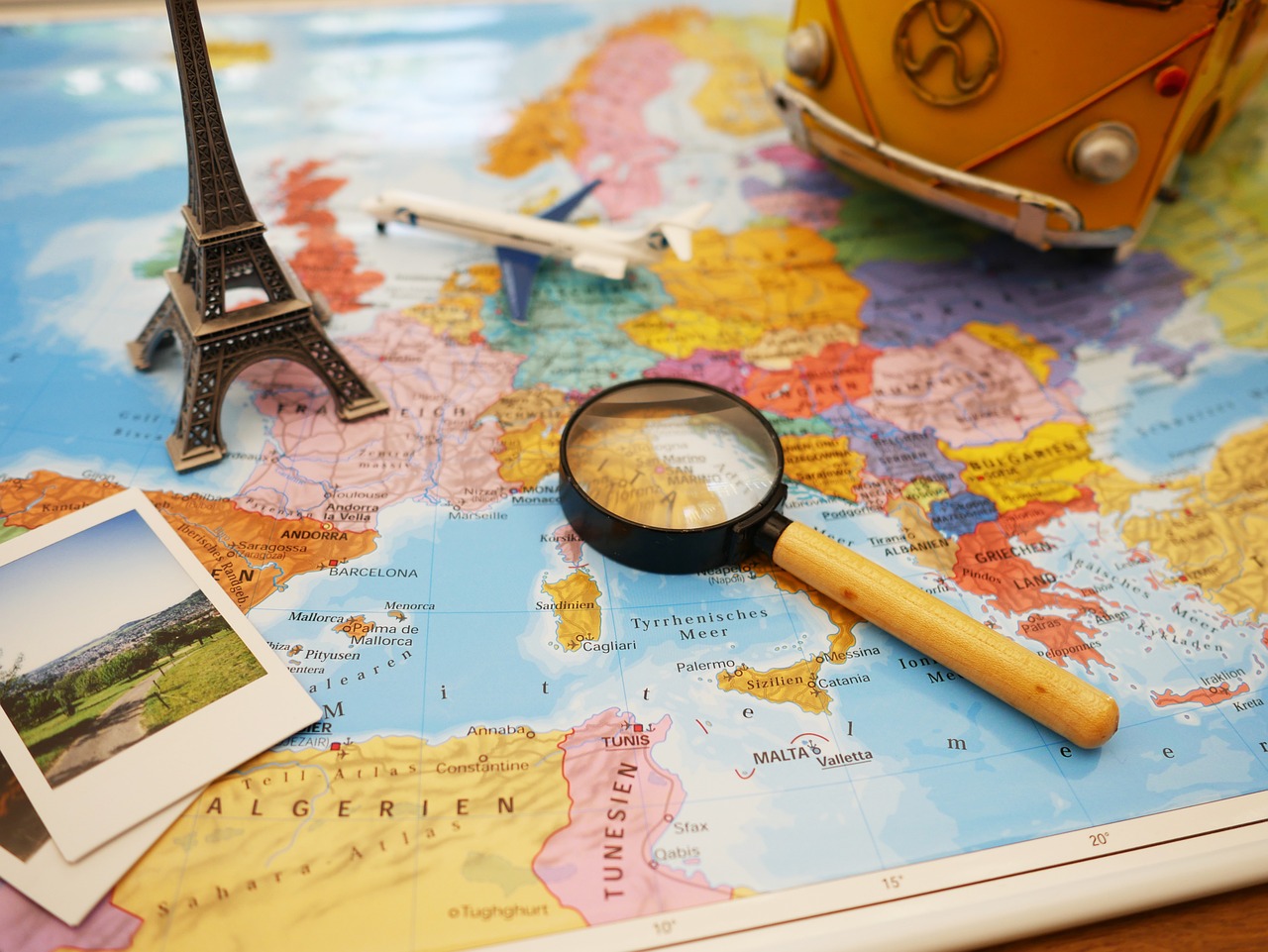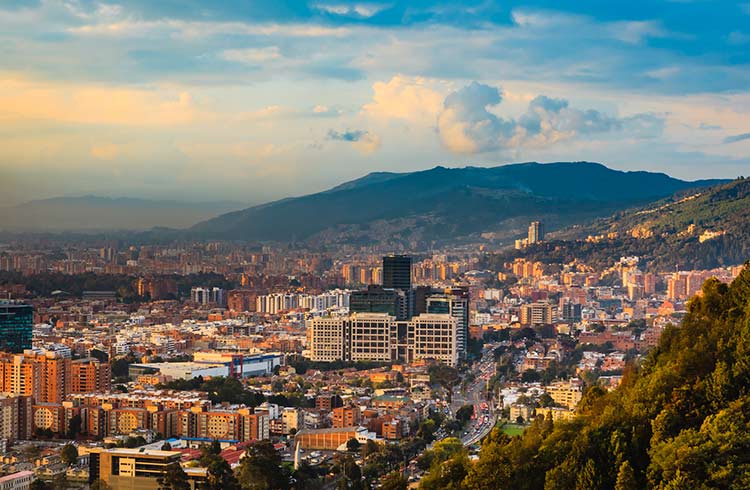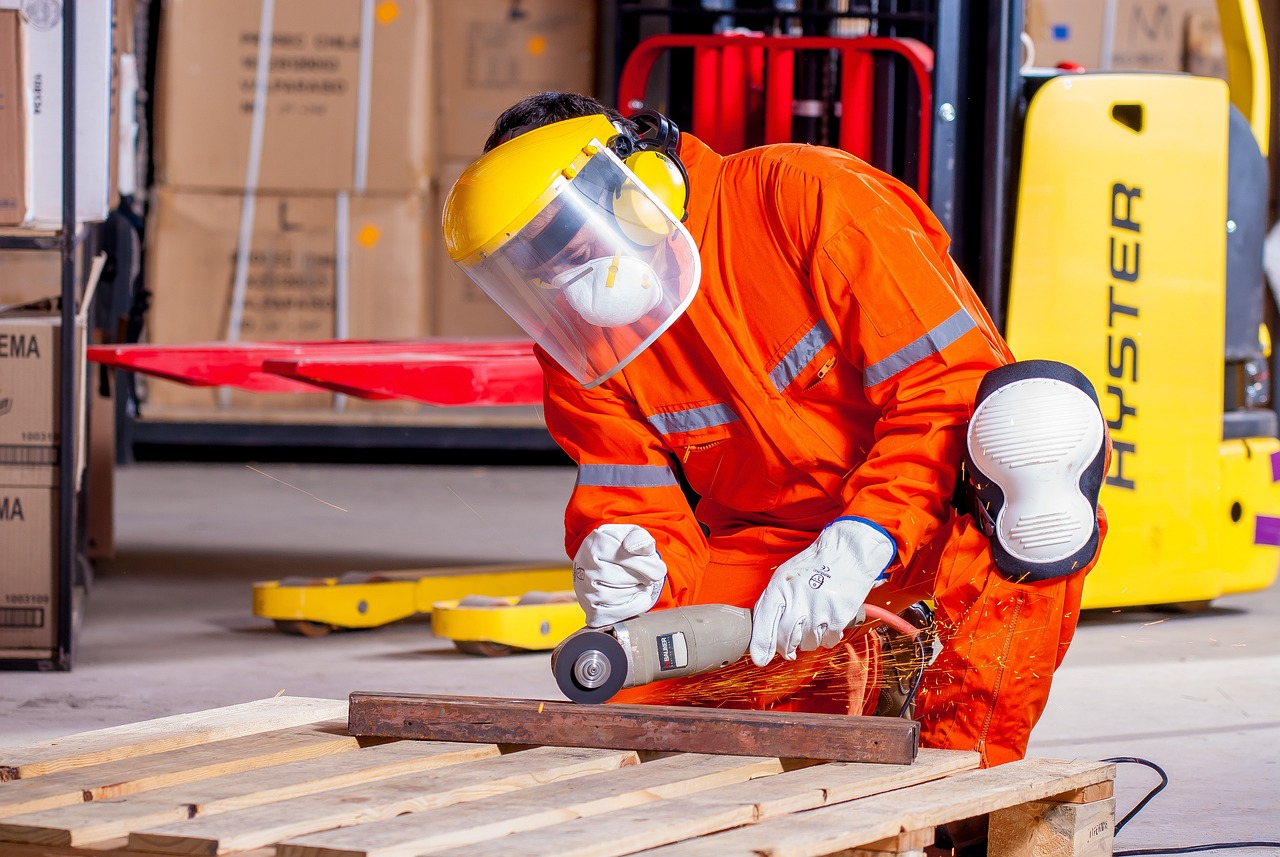Table of Contents
City life offers numerous opportunities and experiences, but it also comes with unique safety considerations. Whether you’re a long-time urban dweller or a visitor exploring the vibrant streets of a metropolis, prioritizing safety and security is paramount. In this article, we will discuss essential tips and strategies to help you stay safe in the city.
City life is a whirlwind of excitement and adventure, but amidst the urban hustle and bustle, safety should always be at the forefront of your mind. Whether you’re a seasoned city dweller or a curious traveler navigating the vibrant streets of a metropolis, making smart choices to prioritize safety and security is paramount. In this article, we will delve into a comprehensive array of essential tips and strategies to ensure that your city experience remains enjoyable and free from harm.
1. Street Smarts: The first rule of city safety is cultivating street smarts. Be aware of your surroundings at all times and avoid distractions like staring at your phone while walking. Stay on well-lit and populated streets, especially at night and trust your instincts if a situation feels unsafe.
2. Public Transportation: Utilizing public transportation is a hallmark of city life, but it’s essential to stay vigilant. Keep your belongings secure, be cautious of crowded spaces and be aware of the schedule to avoid waiting alone at deserted stations.
3. Secure Your Valuables: Pickpocketing is a concern in crowded urban areas. Invest in secure bags or wallets with anti-theft features and keep your valuables close to your body. Avoid displaying expensive items, like jewelry or electronics, openly.
4. Plan Your Routes: Before venturing out, plan your routes and familiarize yourself with the city’s layout. This reduces the risk of getting lost and wandering into unfamiliar or unsafe areas.
5. Emergency Contacts: Always have essential emergency contacts saved in your phone and written down on paper, including local authorities, medical facilities and trusted contacts. In case of an emergency, you’ll be well-prepared to seek help.
6. Accommodation Safety: Choose accommodations wisely. Opt for reputable hotels or lodgings and inquire about security measures like locks and surveillance. Always lock your room when you leave and use hotel safes for valuables.
7. Safe Nightlife: Enjoying the city’s nightlife is part of the experience, but do so safely. Stick with a group when possible, watch your drinks and be cautious of accepting drinks from strangers. Plan your transportation home in advance.
8. Stay Informed: Stay updated on local news and any safety advisories or alerts. Familiarize yourself with the city’s emergency evacuation routes and procedures.
9. Trustworthy Transportation: When using rideshare services or taxis, ensure that you’re getting into a licensed and marked vehicle. Share your ride details with a friend or family member and use the tracking features available in many apps.
10. Be Mindful of Scams: City environments can attract scam artists. Be wary of unsolicited offers, street hustlers and individuals asking for money. Use your judgment and politely decline if something feels off.
11. Health Precautions: In densely populated areas, health precautions are essential. Carry hand sanitizer, be mindful of public health guidelines and seek medical attention if you feel unwell.
12. Travel Insurance: Consider obtaining travel insurance that covers unexpected events, such as medical emergencies, trip cancellations or lost belongings. It provides peace of mind in unpredictable situations.
City life is a vibrant tapestry of experiences, but your safety is the thread that runs through it all. By following these comprehensive safety tips and strategies, you can navigate the urban landscape with confidence, knowing that you’ve taken the necessary precautions to enjoy all that the city has to offer while staying safe and secure. Whether you’re exploring your own city or venturing into a new one, these guidelines ensure that your city adventures remain memorable for all the right reasons.
Looking for more insights? You’ll find them right here in our extended coverage: Pedestrian Safety: Prevent Pedestrian Crashes | NHTSA
Stay Aware of Your Surroundings
Being aware of your surroundings is the foundation of city safety. Whether you’re walking, taking public transportation or simply enjoying a leisurely stroll, stay alert to your environment. Avoid distractions like excessive smartphone use, as they can make you vulnerable to accidents or theft.
Certainly! Here’s an extended idea:
“Being aware of your surroundings is the foundation of city safety. In the bustling urban landscape, where every corner presents a new adventure, it’s essential to prioritize your well-being. Whether you’re walking, taking public transportation or simply enjoying a leisurely stroll, staying alert to your environment is key to ensuring a safe and enjoyable city experience.
The Power of Awareness: City life is dynamic and situations can change rapidly. By staying alert and observant, you empower yourself to react effectively to potential challenges or emergencies. Whether it’s noticing a slippery sidewalk after rain or identifying an unfamiliar face in a crowded subway car, awareness is your first line of defense.
Minimizing Distractions: In the digital age, smartphones and other devices have become constant companions. While they provide connectivity and convenience, excessive use in public spaces can distract you from your surroundings, making you vulnerable to accidents or theft. It’s essential to strike a balance between staying connected and staying aware. Consider dedicating specific moments to checking your phone, rather than constantly glancing at it while on the move.
Navigation Savvy: Urban environments can be labyrinthine, with winding streets, complex public transportation systems and numerous landmarks. Staying aware of your surroundings includes having a clear sense of direction and knowing your route. Utilize maps and navigation apps to plan your journeys, but don’t solely rely on them. Pay attention to street signs, landmarks and the people around you to ensure you’re on the right track.
Avoiding Risky Situations: City safety also involves making informed choices. Avoid dimly lit alleys or secluded areas, especially at night. If you feel uncomfortable in a particular situation, trust your instincts and seek a well-lit, crowded area or a nearby business where you can ask for assistance. Awareness of your surroundings helps you recognize potential risks and take proactive measures to avoid them.
Engaging with the Community: Being aware isn’t just about self-preservation; it’s also about connecting with your community. Smile and acknowledge the people you encounter on your city journeys. Establishing a friendly presence can be reassuring and may even deter potential wrongdoers. Moreover, it fosters a sense of unity and cooperation among fellow city dwellers.
Emergency Preparedness: Awareness includes knowing how to respond to emergencies. Familiarize yourself with emergency contact numbers, locate the nearest police stations, hospitals and fire departments and be aware of evacuation routes in public spaces. Being prepared can make a significant difference in critical situations.
In the urban jungle, awareness is your compass, guiding you through the city’s intricacies and challenges. It empowers you to experience the city with confidence, knowing that you have the tools to navigate its complexities safely. By balancing connectivity with attentiveness, you can fully embrace the dynamic and vibrant urban life while safeguarding your well-being.”
To delve further into this matter, we encourage you to check out the additional resources provided here: MTA Safety and Security

Plan Your Route and Share It
Before venturing out, plan your route, especially if you’re exploring an unfamiliar area. Let someone you trust know where you’re going and when you expect to return. Share your location using smartphone apps if possible. Having a well-thought-out plan ensures you don’t get lost or end up in unsafe neighborhoods.
“Before venturing out, plan your route, especially if you’re exploring an unfamiliar area. Let someone you trust know where you’re going and when you expect to return. Share your location using smartphone apps if possible. Having a well-thought-out plan ensures you don’t get lost or end up in unsafe neighborhoods.
Moreover, planning ahead not only enhances your safety but also enriches your overall experience. It allows you to make the most of your journey by scheduling visits to specific landmarks, trying out local eateries and taking part in unique activities that might align with your interests.
Additionally, in this digital age, there are numerous travel apps and online resources available to help you navigate new places more effectively. You can find detailed maps, real-time transportation updates and user reviews that offer valuable insights into the best places to visit and avoid. Embracing technology as a tool for your adventures can greatly enhance your travel experience.
So, remember, whether you’re embarking on a solo exploration or heading out with friends and family, a well-organized plan not only ensures your safety but also enhances your journey, making it more memorable, enjoyable and hassle-free.”
For additional details, consider exploring the related content available here Hurricanes | Ready.gov

Use Reliable Transportation Options
In the city, you’ll find various transportation choices, from subways and buses to taxis and rideshare services. Opt for reputable and licensed providers. If you’re using rideshare services, confirm the driver’s identity and check that the vehicle matches the details provided in the app.
In the bustling metropolis of New York City, a myriad of transportation options awaits at every corner, ensuring you can navigate the urban jungle with ease and efficiency. Whether you’re a seasoned local or a first-time visitor, these transportation choices are your keys to unlocking the city’s boundless treasures.
Subways: The subway system is the lifeline of the city, a network of underground veins connecting every borough. Fast, reliable and budget-friendly, it’s the go-to choice for daily commuters. Be sure to purchase a MetroCard for easy swiping at turnstiles.
Buses: For destinations not directly accessible by subway, the extensive bus network comes to your rescue. These buses crisscross the city, offering a scenic route to your destination. Don’t forget to have your MetroCard or exact change ready when boarding.
Taxis: The iconic yellow cabs are synonymous with New York City. Hailing a cab is as simple as raising your arm. Look for the taxi’s medallion number on the hood and ensure the meter is on for a fare calculation. Licensed taxis are known for their reliability and safety.
Rideshare Services: Companies like Uber and Lyft have revolutionized city transportation. With the convenience of app-based booking, these services offer an alternative to traditional taxis. Always verify the driver’s identity and match the vehicle details provided in the app to ensure a safe ride.
Biking: The city’s expanding network of bike lanes and Citi Bike stations makes cycling a popular choice. Rent a bike for an eco-friendly and adventurous way to explore the city’s neighborhoods and scenic waterfronts.
Walking: Sometimes, the best way to experience the city is on foot. New York’s grid layout makes navigation straightforward and strolling through the streets lets you soak in the energy and atmosphere that define the city.
Ferries: Waterways crisscrossing the city offer a unique mode of transportation. From the Staten Island Ferry, which offers stunning views of the Statue of Liberty, to the East River ferries connecting Manhattan, Brooklyn and Queens, these rides provide a refreshing perspective of the city.
As you embark on your urban adventures, prioritize reputable and licensed transportation providers to ensure a safe and enjoyable journey. With a wealth of options at your fingertips, you can tailor your travel to your preferences, whether it’s a speedy subway commute, a leisurely bike ride or a scenic ferry cruise. In the city that never sleeps, transportation is your ticket to discovering the diverse neighborhoods, iconic landmarks and hidden gems that make New York City an unparalleled destination.
To delve further into this matter, we encourage you to check out the additional resources provided here: Safety and Security | University of Chicago

Stay in Well-Lit Areas at Night
Cities come alive at night, but not all areas are equally safe after dark. Stick to well-lit streets and avoid shortcuts through alleys or parks at night. When possible, travel with a group, as there’s safety in numbers.
Cities truly come alive at night, their streets bathed in the warm glow of streetlights and the hum of urban life echoing through the air. However, the nighttime adventure, while thrilling, also requires a measure of caution and awareness, especially when it comes to personal safety. Here, we delve deeper into the art of navigating a city after dark, where the intoxicating blend of excitement and security is found by making wise choices.
Neighborhood Exploration: While daytime is ideal for exploring a city’s landmarks and attractions, nighttime provides a unique opportunity to delve into its neighborhoods and discover hidden gems. The soft illumination of streetlights casts a romantic aura over cobblestone streets, historic districts and bustling marketplaces. Venture out to savor the local cuisine, visit cozy cafes or simply take a leisurely stroll. The magic of a city often reveals itself most vividly during these nighttime escapades.
Safety as a Priority: Prioritizing safety should be at the forefront of your nighttime adventures. Stick to well-lit streets, where visibility is enhanced and the chances of encountering trouble are diminished. Urban planners and city officials work diligently to ensure that public spaces are well-illuminated, offering a sense of security to pedestrians. Familiarize yourself with the neighborhoods you plan to explore and seek advice from locals or your accommodation staff regarding the safest routes and areas to visit after dark.
Avoiding Isolated Areas: Steer clear of shortcuts through alleys, quiet parks or desolate areas at night. These places, while charming during the day, can become secluded and potentially risky after dark. Opt for main thoroughfares and busy streets, where there are more people around and a higher likelihood of assistance in case of need.
Strength in Numbers: One of the cardinal rules of urban exploration at night is to travel with a group whenever possible. There’s undeniable safety in numbers, as a group can deter potential troublemakers and provide mutual support. Whether you’re enjoying a night out with friends or participating in group tours, the shared experience enhances not only your safety but also the enjoyment of the city’s nightlife.
Technology as a Companion: In the age of smartphones, technology can be a valuable ally in ensuring your safety. Keep your phone charged and ready for use and consider using safety apps or sharing your location with a trusted friend or family member. These measures provide an extra layer of security and peace of mind.
Local Insights: Tap into the wisdom of locals or fellow travelers who are familiar with the city’s nightlife scene. They can offer recommendations on safe places to visit, reputable transportation options and the most exciting events happening after dark.
In essence, a city’s nightlife is a canvas of culture, vibrancy and adventure waiting to be explored. By prioritizing safety, choosing well-illuminated paths and traveling in groups when possible, you can embrace the enchantment of the night while ensuring your well-being. The city comes alive not only in its lights and sounds but also in the knowledge that you are navigating its nocturnal wonders with confidence and wisdom, creating unforgettable memories along the way.
To expand your knowledge on this subject, make sure to read on at this location: Basic Street Safety for Women : 11 Steps (with Pictures) – Instructables

Secure Your Belongings
City environments can be crowded, making it easier for pickpockets and thieves to operate. Keep your belongings secure by using bags with zippers, crossbody straps or hidden pockets. Be mindful of your purse or backpack and avoid leaving valuables in plain sight.
City environments can be crowded, making it easier for pickpockets and thieves to operate. However, with some savvy precautions, you can navigate urban landscapes confidently and keep your belongings secure.
Choose the Right Bag: Opt for bags with secure closures like zippers or buckles. Crossbody bags are an excellent choice as they can be worn close to your body, making it more challenging for someone to snatch them.
Hidden Pockets: Invest in bags or clothing with hidden pockets. These discreet compartments can be lifesavers for stashing your passport, wallet or smartphone out of sight and reach.
Use Anti-Theft Bags: Consider anti-theft bags designed with additional security features such as slash-resistant straps and RFID-blocking compartments to protect your credit card information.
Stay Vigilant: Be mindful of your bag, purse or backpack at all times, especially in crowded areas. Keep it in front of you and hold onto it securely. Avoid hanging it on the back of your chair in restaurants or cafes.
Distribute Valuables: Don’t keep all your valuables in one place. Split up cash, credit cards and identification into different pockets or pouches. This way, even if you lose something, you won’t lose everything.
Minimalist Approach: Only carry what you need for the day. Leave unnecessary items, such as excessive cash or extra credit cards, in your hotel safe or at home. The less you carry, the less attractive you are to potential thieves.
Be Cautious in Crowds: Crowded events and public transportation are prime spots for pickpockets. Pay extra attention to your belongings in these situations. Backpacks with rear access can be a safer option in crowded places.
Stay Informed: Research your destination and be aware of common scams or theft hotspots in the area. Local knowledge can go a long way in keeping you safe.
Lock Up Your Bag: When dining out or sitting at a cafe, consider using a bag lock or a carabiner to secure your bag to a fixed object, like the leg of a table or a chair.
Stay Connected: Keep a list of emergency phone numbers and contact information for your embassy or consulate handy. In case of theft, report it promptly to local authorities and your embassy if necessary.
By following these precautions, you can enjoy the vibrant energy of city life while keeping your belongings safe from prying hands. Remember that awareness and preparedness are your best allies in navigating urban environments securely.
Explore this link for a more extensive examination of the topic: Flood Safety Tips | Mass.gov

Be Cautious of Strangers
While it’s important to be open and friendly, exercise caution when interacting with strangers. Avoid sharing personal information with people you’ve just met and be skeptical of unsolicited offers or requests for money. Trust your instincts and if something feels off, remove yourself from the situation.
“While it’s important to be open and friendly, exercise caution when interacting with strangers. Avoid sharing personal information with people you’ve just met and be skeptical of unsolicited offers or requests for money. Trust your instincts and if something feels off, remove yourself from the situation. Personal safety should always be a priority, especially in unfamiliar surroundings. Stay aware of your surroundings, stay in well-lit and populated areas and consider informing a friend or family member of your whereabouts when exploring new places. By staying cautious and vigilant, you can enjoy your experiences while minimizing potential risks.”
You can also read more about this here: Mexico Travel Advice & Safety | Smartraveller

Know Emergency Contact Information
Familiarize yourself with local emergency contact information, including the nearest police station, hospital and fire department. Store these numbers in your phone and have a backup written down or memorized.
Preparing for emergencies is a responsible step toward ensuring your safety and the safety of those around you. To be better equipped for unexpected situations, start by getting acquainted with essential local emergency contact information. Know the location of the nearest police station, hospital and fire department in your area.
Having these critical numbers at your fingertips is crucial. Store them in your phone’s contacts under easily recognizable names like “Emergency Services” to ensure quick access when needed. This digital convenience is invaluable, especially in stressful moments when every second counts.
However, technology can be unpredictable and situations may arise where your phone is inaccessible. That’s why it’s equally important to have a backup plan. Consider keeping a written list of emergency numbers in your wallet or purse, alongside your identification. This physical copy can be a lifesaver when electronic devices fail or during power outages.
Moreover, take the time to educate your family members or close contacts about these emergency numbers and their importance. Encourage them to store these contacts on their phones and to memorize them, if possible. In emergencies, having multiple individuals who can quickly access help can make all the difference.
Remember that being prepared isn’t about living in fear of emergencies but rather about empowering yourself and your community to respond effectively in unexpected situations. By familiarizing yourself with local emergency contact information and encouraging others to do the same, you contribute to a safer and more resilient environment for everyone.
Looking for more insights? You’ll find them right here in our extended coverage: Safety Resources | University of Chicago

Stay Informed About Local News
Keeping up with local news can provide valuable insights into current safety conditions and any potential issues in the city. Download a trusted news app or bookmark reliable websites to stay informed.
Staying informed through local news isn’t just a habit; it’s a lifeline to understanding the ever-evolving dynamics of your city. The significance of keeping your finger on the pulse of your local community cannot be overstated. It’s not merely about being in the know; it’s about being prepared, engaged and connected to the place you call home.
A Window into Safety and Security: Local news outlets are the frontline reporters on the state of your city’s safety. They provide real-time updates on traffic accidents, road closures, weather-related issues and even public safety alerts. By staying informed, you can adjust your plans accordingly, avoid potential hazards and ensure the safety of yourself and your loved ones. Whether it’s a sudden storm, a traffic accident that could affect your commute or a public health announcement, local news is your trusted source for these critical updates.
Understanding Your Community: Local news goes beyond immediate safety concerns. It delves into the heart of your community, covering stories that impact your neighborhood, schools, businesses and local government. By following these stories, you gain insight into the challenges, triumphs and initiatives that shape your community’s identity. This knowledge can empower you to become an active participant in local affairs, from attending town hall meetings to volunteering for community projects.
Supporting Local Businesses: Local news often highlights the stories of businesses and entrepreneurs in your area. These stories shed light on new restaurants, shops and services that you might not have otherwise discovered. By patronizing these local businesses, you not only stimulate the local economy but also foster a sense of community. Plus, you may uncover hidden gems and unique experiences right in your own backyard.
Connecting with Your Neighbors: Local news can also serve as a platform for community engagement. It provides a space for neighbors to share their stories, voice concerns and celebrate achievements. Through local news websites and social media pages, you can connect with like-minded individuals who share your passion for your neighborhood’s growth and well-being. These connections can lead to lasting friendships and partnerships that benefit the entire community.
Promoting Civic Responsibility: Being informed about local news isn’t just a personal benefit; it’s a civic responsibility. It enables you to make informed decisions during local elections, advocate for causes you care about and hold local leaders accountable for their actions. Your engagement with local news can help shape the future of your community and ensure that it remains a place you’re proud to call home.
In a world inundated with information, local news remains a trusted beacon that keeps you grounded and connected to your city. Whether through a dedicated news app or by bookmarking reliable websites, making local news a part of your daily routine is an investment in your safety, your community and your own sense of belonging. So, stay informed, stay engaged and watch how your city thrives when its residents are well-informed and actively involved.
For additional details, consider exploring the related content available here Prepare! Don’t Let Severe Weather Take You by Surprise

Use ATMs Wisely
When withdrawing cash from ATMs, choose machines located in well-lit and populated areas. Shield your PIN entry and avoid counting money at the machine. Stash your cash discreetly and securely.
When it comes to ATM safety, a few extra precautions can go a long way in ensuring a secure and stress-free transaction experience. Here are some additional tips to keep in mind:
1. Plan Ahead: Before heading to an ATM, plan your withdrawal and have a clear idea of how much cash you need. This minimizes the time you spend at the machine, reducing your exposure to potential risks.
2. Use Bank-Owned ATMs: Whenever possible, opt for ATMs that are owned and operated by reputable banks. These machines are usually well-maintained, monitored for security and less likely to have skimming devices or other fraudulent attachments.
3. Notify Someone: Let a friend or family member know that you’re going to use an ATM and approximately how long you’ll be gone. In case of an emergency, someone will be aware of your whereabouts.
4. Stay Aware: While waiting in line or at the machine, stay alert and aware of your surroundings. Avoid distractions like talking on the phone or checking your messages, as these can make you an easy target.
5. Conceal Your Transaction: Shield your PIN entry not only from onlookers but also from any surveillance cameras that may be nearby. Use your hand or body to block the view while entering your PIN.
6. Check for Skimming Devices: Before inserting your card, inspect the card reader and keypad for any unusual attachments or irregularities. If something looks out of place or suspicious, do not use the ATM and report it to the bank.
7. Be Cautious at Night: If you must use an ATM after dark, choose one located in well-lit and busy areas. Drive-thru ATMs at well-lit bank branches can provide added safety when conducting transactions at night.
8. Vary Your Routine: Avoid always using the same ATM at the same location. By varying your routine, you reduce the chances of potential criminals predicting your habits.
9. Use Cash Alternatives: Consider using mobile payment apps, debit or credit cards or contactless payments whenever possible to reduce the need for cash withdrawals.
10. Store Cash Securely: After withdrawing cash, don’t display it openly. Store it securely in your wallet, purse or pocket before leaving the ATM area.
11. Monitor Your Accounts: Regularly check your bank statements and account activity online to quickly detect any unauthorized transactions. Many banks offer mobile apps that provide real-time alerts for added security.
12. Trust Your Instincts: If something doesn’t feel right or if you notice any suspicious behavior around the ATM, trust your instincts and abandon the transaction. Your safety is paramount.
By incorporating these additional safety measures into your ATM routine, you can enhance your personal security and minimize the risk of encountering any issues while accessing your cash. Remember, a few moments of caution can help ensure a safe and worry-free banking experience.
For additional details, consider exploring the related content available here 10 Mexico City Safety Tips That Will Help You On Your Trip

Trust Your Instincts
Your intuition is a powerful tool for personal safety. If you feel uncomfortable or unsafe in a situation or location, trust your gut and take action to remove yourself from it.
Your intuition is a powerful tool for personal safety. If you feel uncomfortable or unsafe in a situation or location, trust your gut and take action to remove yourself from it.
1. Listen to Your Instincts: Human instincts have evolved over millennia to help us navigate complex situations, including those that may pose a threat. When your intuition sends you signals of discomfort or unease, it’s important to pay attention. These feelings are your brain’s way of alerting you to potential danger.
2. Avoid Risky Situations: If your intuition is telling you that a situation doesn’t feel right, it’s wise to err on the side of caution. For example, if you’re at a social gathering and sense that something is amiss, such as excessive alcohol consumption or aggressive behavior, consider leaving or distancing yourself from the source of discomfort.
3. Trust Your Environment: Your intuition can also be attuned to your surroundings. If you’re in an unfamiliar area and it doesn’t feel safe, trust that feeling. Choose well-lit and populated routes when walking and avoid isolated or dimly lit places, especially at night.
4. Use Technology Wisely: In today’s digital age, technology can be a valuable safety tool. Use ride-sharing apps to share your trip details with friends or family when taking a taxi or rideshare service. Ensure your phone is charged and easily accessible in case you need to call for help.
5. Communicate: If you’re with others, communicate your concerns and plans. Let someone know where you’re going and when you expect to return. Having a “check-in” system with friends or family can provide an added layer of safety.
6. Develop a Personal Safety Plan: Depending on your lifestyle and circumstances, consider creating a personal safety plan. This plan may include designated safe meeting places, emergency contacts and steps to take in various situations. Having a plan in place can help you stay calm and focused if a safety concern arises.
7. Learn Self-Defense: While not necessary for everyone, taking self-defense classes can boost your confidence and ability to protect yourself if needed. Knowing how to defend against potential threats can be empowering and provide an added layer of security.
8. Be Discreet with Personal Information: In an era of information sharing, be cautious about revealing personal details to strangers, especially online. Use privacy settings on social media and avoid disclosing your location in real-time unless necessary.
9. Seek Help When Needed: If your intuition leads you to believe you’re in immediate danger or witness a dangerous situation, don’t hesitate to call emergency services. Your safety is paramount and professionals are trained to respond to such situations.
In conclusion, your intuition is a valuable ally when it comes to personal safety. It’s an evolutionary tool that can help protect you from harm. Trusting your instincts and taking proactive steps to remove yourself from potentially risky situations are essential aspects of staying safe in an urban environment or any setting. Your safety is a priority and it’s always better to act on intuition and avoid a potential threat than to ignore it.
To expand your knowledge on this subject, make sure to read on at this location: City Safety | MGH IHP
Staying safe in the city is a matter of vigilance, awareness and preparedness. By following these tips and remaining mindful of your surroundings, you can navigate urban environments confidently and enjoy all that city life has to offer without compromising your safety and security. Remember that safety is a priority and taking proactive steps ensures that you can make the most of your city experiences while staying protected.
Living in a city is an exhilarating experience, filled with endless opportunities and a bustling atmosphere. Yet, as the saying goes, “An ounce of prevention is worth a pound of cure.” Ensuring your safety in the city requires vigilance, awareness and preparedness. Here are some practical tips to help you navigate urban environments confidently and make the most of your city life while safeguarding your well-being:
Stay Aware: One of the most crucial aspects of city safety is maintaining awareness of your surroundings. Keep your head up, avoid distractions like excessive phone use and be observant. Being aware of your environment allows you to spot potential dangers before they become threats.
Trust Your Instincts: If something doesn’t feel right, trust your gut. Your intuition is a powerful tool. If a situation or person makes you uncomfortable, it’s okay to remove yourself from it. Prioritize your safety over politeness or social expectations.
Plan Your Routes: Familiarize yourself with the city’s layout and public transportation systems. Plan your routes in advance, especially if you’re traveling alone at night. Stick to well-lit, busy streets whenever possible and share your itinerary with a trusted friend or family member.
Travel in Groups: There’s safety in numbers. Whenever you can, travel with friends or in groups, especially during nighttime excursions. This not only enhances your safety but also adds to the enjoyment of city life.
Use Reliable Transportation: Opt for reputable transportation services, whether it’s public transit, rideshares or taxis. Verify the credentials of the drivers and double-check that you’re getting into the correct vehicle. Share your ride details with someone you trust.
Secure Your Belongings: Keep your belongings secure to prevent theft. Use crossbody bags, wallets with RFID protection and be mindful of pickpockets in crowded areas. Consider investing in a lock for your backpack or luggage when in transit.
Emergency Contacts: Save important contact numbers, such as local law enforcement and emergency services, in your phone. Also, make sure someone knows your whereabouts at all times and establish a designated meeting point in case you get separated from your group.
Stay Informed: Keep up with local news and safety updates. Being informed about any ongoing events or potential risks in the city can help you make informed decisions about your activities.
Learn Basic Self-Defense: Consider taking self-defense classes to boost your confidence and ability to protect yourself if needed. Knowing how to react in challenging situations can provide a valuable sense of empowerment.
Emergency Kit: Carry a small emergency kit with essentials like a flashlight, first-aid supplies and contact information. It’s a small investment that can be immensely helpful in unexpected situations.
Community Engagement: Get to know your neighbors and be an active part of your community. Strong community ties can enhance safety and provide support during emergencies.
Remember, safety is a priority, but it doesn’t mean you have to sacrifice the joys of city life. By remaining vigilant, aware and prepared, you can confidently embrace all that urban environments have to offer while ensuring your well-being. These proactive steps are the keys to unlocking the full potential of your city experiences, allowing you to explore, learn and enjoy with peace of mind.
To delve further into this matter, we encourage you to check out the additional resources provided here: Safety | National Center on Safe Supportive Learning Environments …
More links
Explore this link for a more extensive examination of the topic: Safety Tips – Staying Safe in the City | University of Chicago
